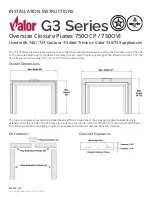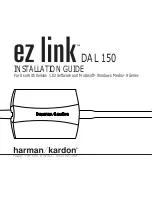
23
24
CCoonnttrrooll M
Maaiinntteennaannccee
Ikelite controls are designed to provide years of reliable service
with minimal maintenance.
1. Push button controls require no maintenance other than rinsing
in fresh water after saltwater use. If a push button control
becomes difficult to push or if it sticks when depressed, soak the
housing in luke warm fresh water. After a few minutes operate
the push button. If this does not correct the problem, return the
housing to Ikelite for maintenance.
2. Some of the controls have long shafts. These controls can be
pulled out, exposing the shaft (see drawing).
To lubricate the control, gently pull on the knob until the
stainless steel shaft is exposed. Lightly lubricate the shaft, then
move the shaft in and out several times. This will lubricate the
x’ring in the Ikelite control gland. This should be done before
using the housing after a prolonged storage period, or once a
week when the housing is in use.
housing
lubricate shaft
pull out to
expose shaft
M
Maaiinntteennaannccee
The Ikelite Housing should be given the same care and attention as
your other photographic equipment. In addition to normal
maintenance, we recommend that the housing be returned to
Ikelite periodically to be checked and pressure tested.
1. D
Doo N
Noott leave the camera and housing in direct sunlight for
prolonged periods. Heat may damage the camera.
2. D
Doo N
Noott ship the camera in the housing.
3. Before using the housing, always check the tightness of the sseett
ssccrreew
w in each control knob.
Check each ccoonnttrrooll ggllaanndd penetrating the housing to make sure
they are tight. There is a slight chance that either could vibrate
loose during travel.
4. Keep the back and port o’ring clean and lightly lubricated. To
lubricate, remove the o’ring from the back. Put a small amount
of lkelite lubricant on your fingers. Pull the o’ring through your
fingers to apply a light coating of lubricant. Only apply enough
lubricant to make the o’ring feel slick. D
Doo N
Noott ssttrreettcchh tthhee oo’’rriinngg.
This light coating of lubricant will help to keep the o’ring from
drying out and will help to show a dark sealing line when the
housing back is properly sealed.
5. Keep the area where the o’ring fits and the sealing surface clean.
6. Rinse the housing exterior thoroughly in fresh water after each
salt water use. Depress push buttons several times during rinse.
Dry with a soft cloth. Dry port to eliminate water spotting.
After several uses in salt water soak the housing in a mild soap
solution, rinse, and dry.
7. Although not recommended, if it is necessary to remove a
housing push button, D
Doo N
Noott re-use the E-clip. Contact Ikelite
for replacement E-clips (part #0319.12).
CCAAU
UTTIIO
ON
N::
N
Neevveerr uussee sspprraayy lluubbrriiccaannttss aass tthhee pprrooppeellllaanntt
i
innggrreeddiieenntt ccaann ccaauussee tthhee ppllaassttiicc hhoouussiinngg ttoo ccrraacckk..
22
21
PPoorrttss CCoonnttiinnuueedd
FFLLAATT PPO
ORRTT
F
Foorr ssttaannddaarrdd,, m
maaccrroo,, aanndd tteelleepphhoottoo lleennsseess..
Due to light refraction, flat ports reduce the angle-of -coverage of
a lens, and at the same time enlarge the image. This makes the flat
port ideal to shoot small subjects when using standard, macro or
zoom lenses . Note that if a port is long enough to accommodate
the full length of a 1:1 macro lens, the lens may vignette when used
at infinity. If access to the lens' full range is desired, then select a
dome port instead.
FFLLAATT PPO
ORRTT
#5501. . . . . Lens up to 6.3cm (2.5")
#5502. . . . . Lens 6.3-8.9cm (2.5-3.5")
#5502.41 . . Lens 7.9-10.4cm (3.1-4.125")
#5505. . . . . Lens 8.9-11.4cm (3.5-4.5")
#5505.45 . . Lens 10.4-13cm (4.1-5.125")
#5505.5 . . . Lens 11.4-14cm (4.5-5.5")
#5505.58 . . Lens 13-15.5cm (5.1-6.125")
PPoorrttss CCoonnttiinnuueedd
FFLLAATT PPO
ORRTT W
WIITTH
H FFO
OCCU
USS
F
Foorr lloonngg lleennsseess w
whhoossee ffooccuuss ccoollllaarr eexxtteennddss bbeeyyoonndd tthhee hhoouussiinngg
f
fooccuuss.. TTeelleepphhoottoo lleennsseess lloonnggeerr tthhaann 113355m
mm
m aarree nnoott rreeccoom
mm
meennddeedd..
#5506. . . Lens 8.9-11.4cm (3.5-4.5")
#5506.5 . Lens 11.4-14cm (4.5-5.5")
#5507. . . Lens 14-16.5cm (5.5-6.5")
#5508. . . Lens 16.5-19cm (6.5-7.5")
88”” D
Doom
mee PPoorrttss
8
8”” ddoom
mee ppoorrttss aarree rreeccoom
mm
meennddeedd ffoorr w
wiiddee aannggllee aanndd ssuuppeerr w
wiiddee
a
annggllee lleennsseess ttoo iinnccrreeaassee iim
maaggee eeddggee sshhaarrppnneessss..
F
Foorr aa ccoom
mpplleettee ccuurrrreenntt lliisstt ooff ccoom
mppaattiibbllee O
Ollyym
mppuuss lleennsseess w
wiitthh aann
8
8”” ddoom
mee ppoorrtt,, ggoo ttoo w
ww
ww
w..iikkeelliittee..ccoom
m..

























